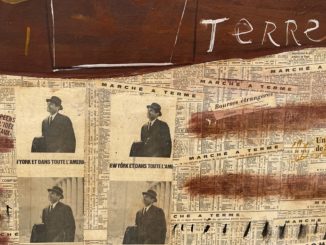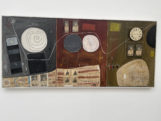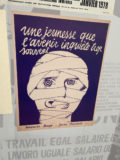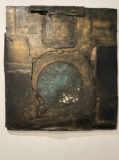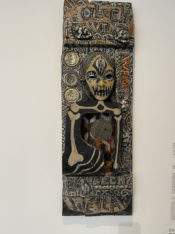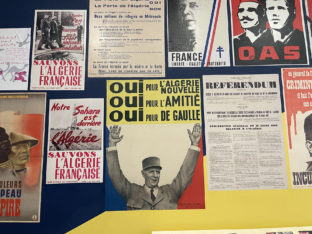Dear Shaded Viewers,
Rediscovering 20th-Century Arab Modernism in Paris
The Musée d’Art Moderne de Paris invites visitors to explore the rich diversity of 20th-century Arab modernism and reevaluate the history of under appreciated art scenes in Europe. “Modern Art and Decolonization: Paris 1908 – 1988” showcases over 200 works, many never before exhibited in France, highlighting the intricate relationship between Arab artists and Paris throughout the century.
The exhibition presents a unique narrative of modern art through extensive historical audio and visual archives. It spans from 1908, marked by Gibran Khalil Gibran’s arrival in Paris and the opening of Cairo’s Ecole des Beaux-Arts, to 1988, featuring the first contemporary Arab artist exhibition at the Institut du Monde Arabe and “Singuliers: bruts ou naïfs” at the Musée d’Art Moderne.
Art historian Silvia Naef captures the essence of this movement in the exhibition catalogue, noting the emergence of a distinctly modern Arab art that diverges from traditional forms, aligning with Western avant-gardes while asserting a unique national identity.
The exhibition features over 130 rarely seen artists who significantly contributed to the Arab avant-garde and the broader history of 20th-century modern art. Paris, described as the “capital of the Third World” by historian Michael Goebel, served as a crucial hub for anti-colonial networks and cosmopolitan modernities from the 1920s onward. The city’s art schools and modernist salons were pivotal in promoting abstraction and welcoming Arab artists.
Divided into four chronological sections, the exhibition covers:
- Nahda: 1908–1937 – Exploring the Arab cultural renaissance amid Western influence, particularly in Egypt, Lebanon, and Algeria.
- Farewell to Orientalism: 1937–1956 – Highlighting the independence movements in Egypt, Iraq, Lebanon, and Syria, and the shift towards local artistic expressions.
- Decolonisation: 1956–1967 – Reflecting on the period of national independence in North Africa and the global reach of modern Arab art.
- Art and Political Struggle: 1967–1988 – Focusing on the political and anti-imperialist themes dominating the art scene, culminating in significant works addressing Arab immigration in France.
The exhibited works come from major regional collections, including Mathaf in Doha and the Barjeel Art Foundation in Sharjah, as well as private and public French collections. The exhibition catalogue includes extensive documentation, images, and essays by prominent authors, offering an in-depth look at the major chapters of modern Arab art in Paris.
Curated by Odile Burluraux from the Musée d’Art Moderne and Morad Montazami from Zamân Books & Curating, this exhibition is a must-see for anyone interested in the intersections of art, history, and politics.
Later,
Diane

